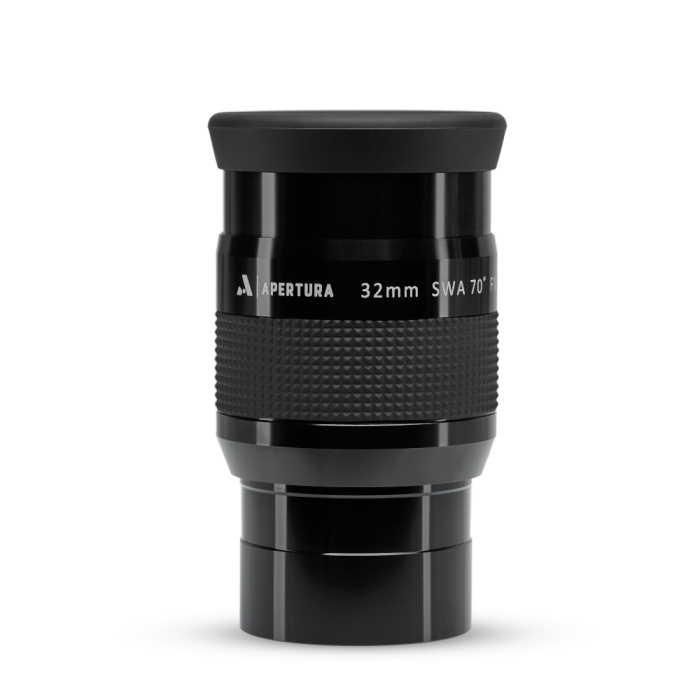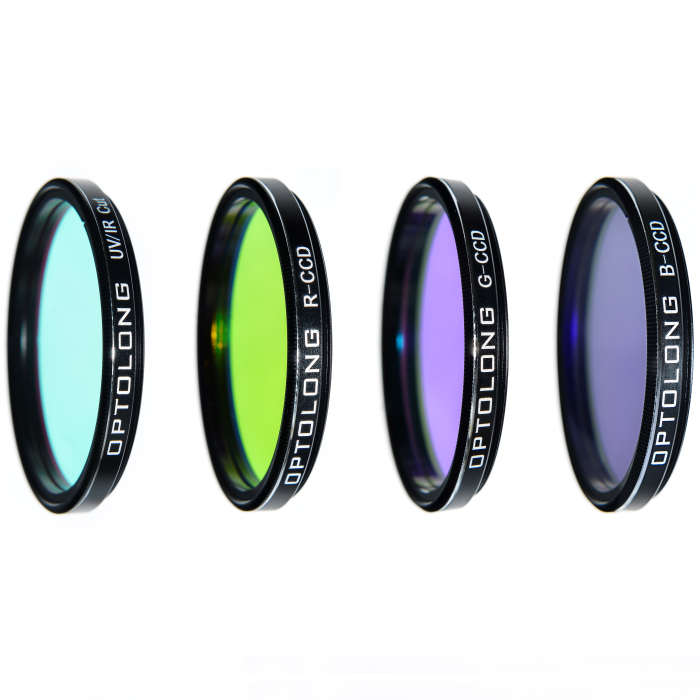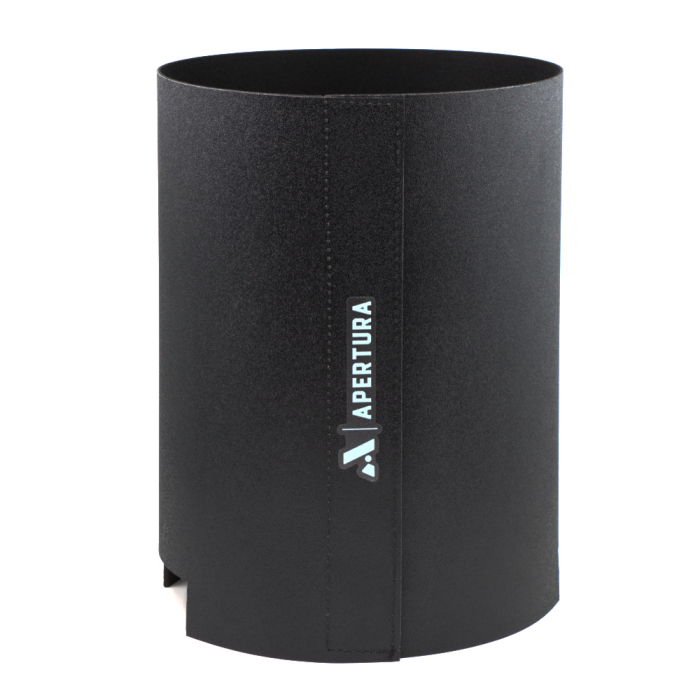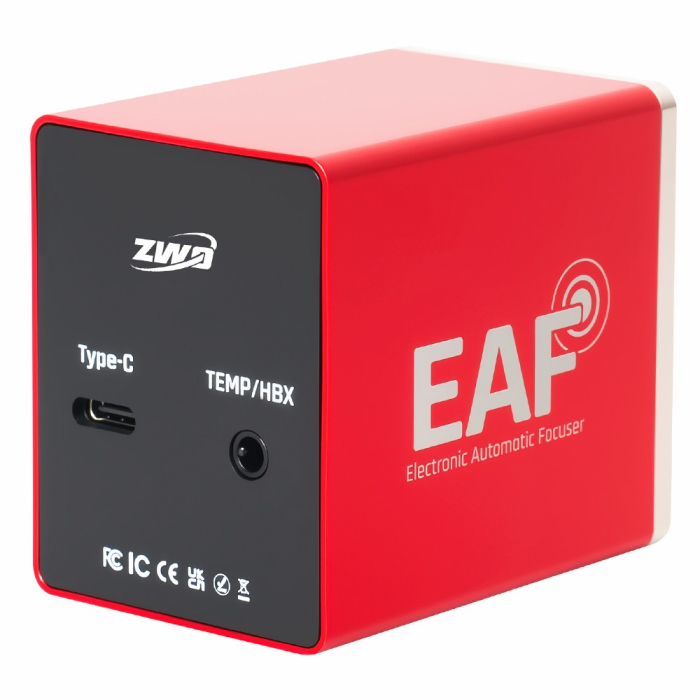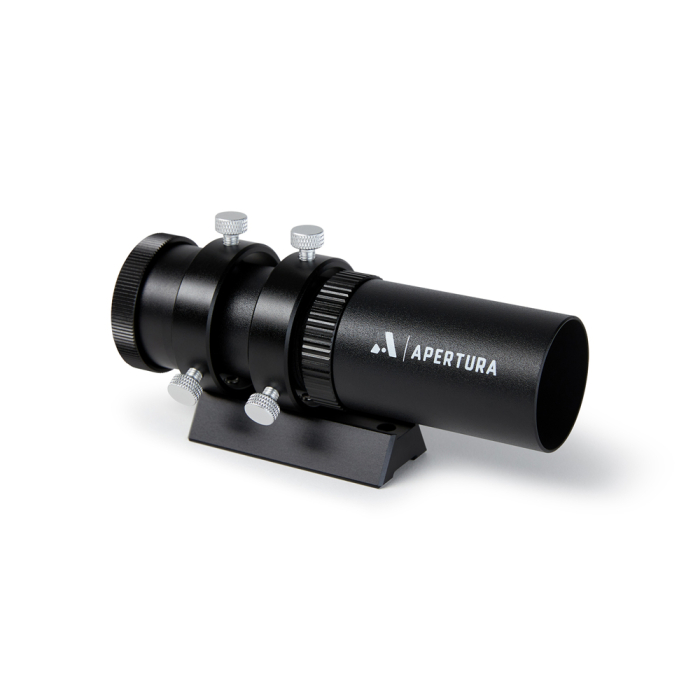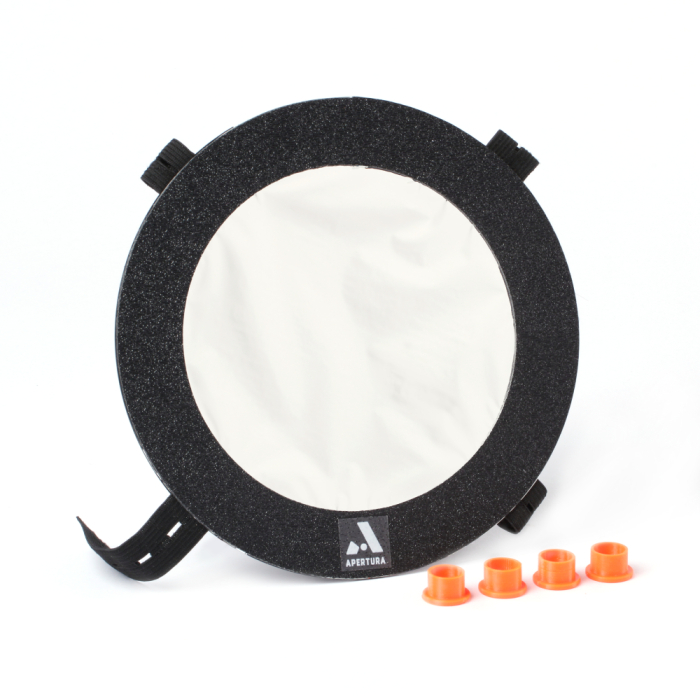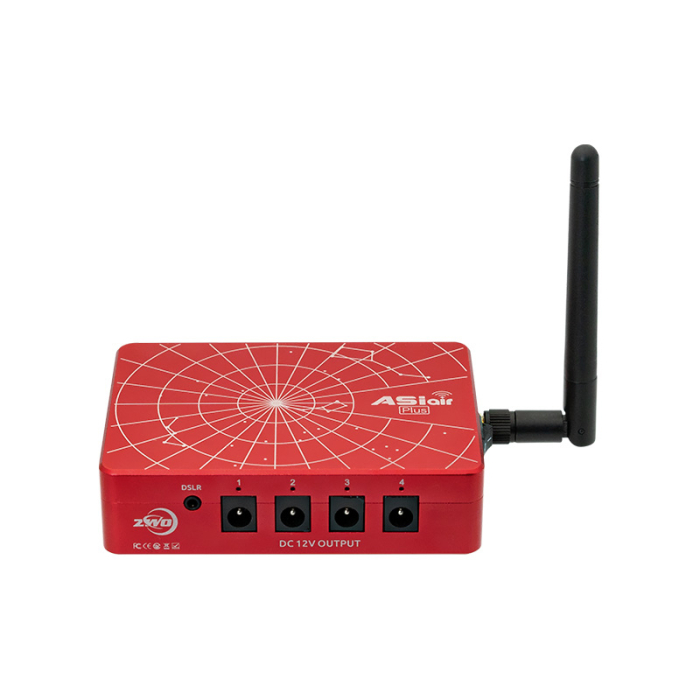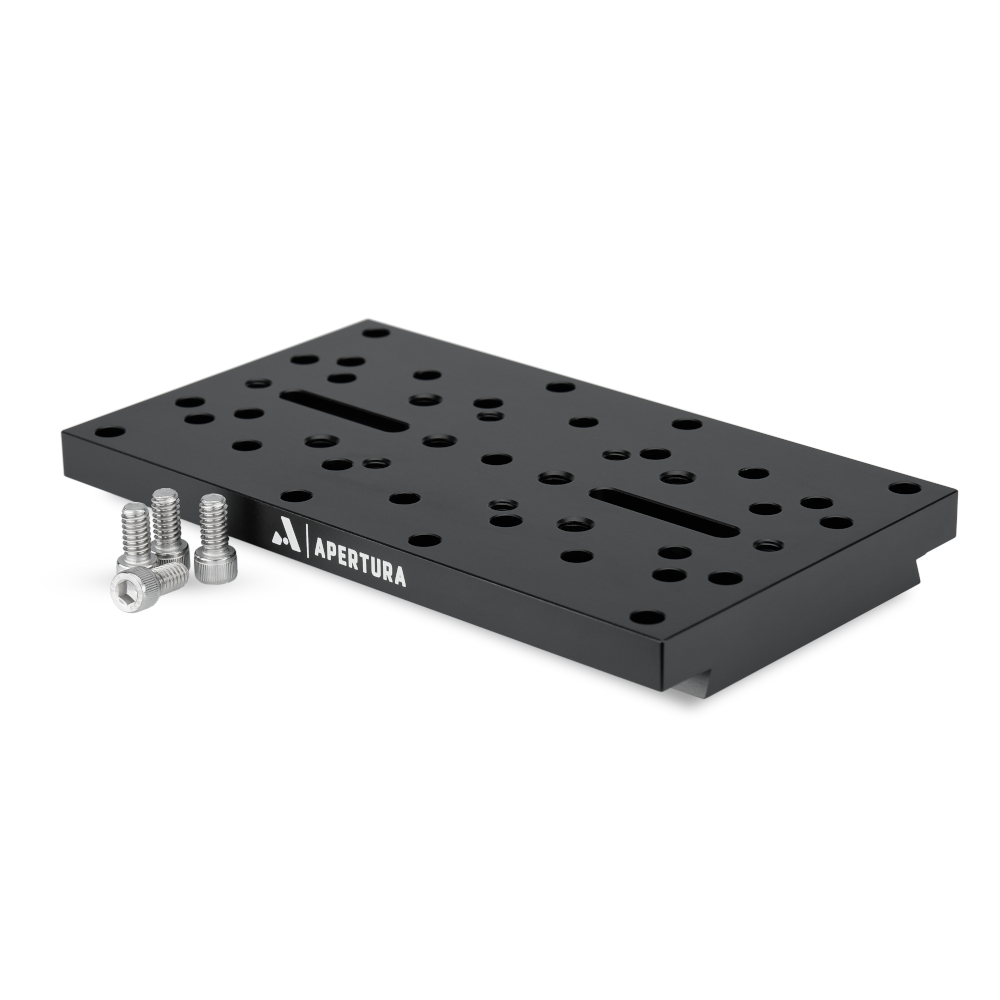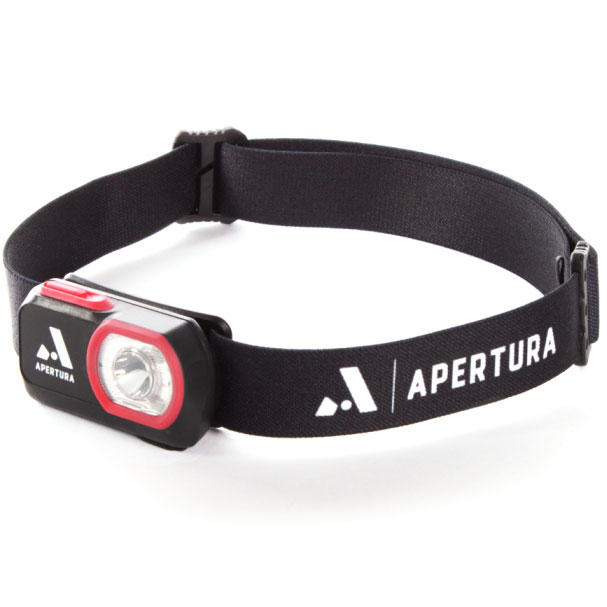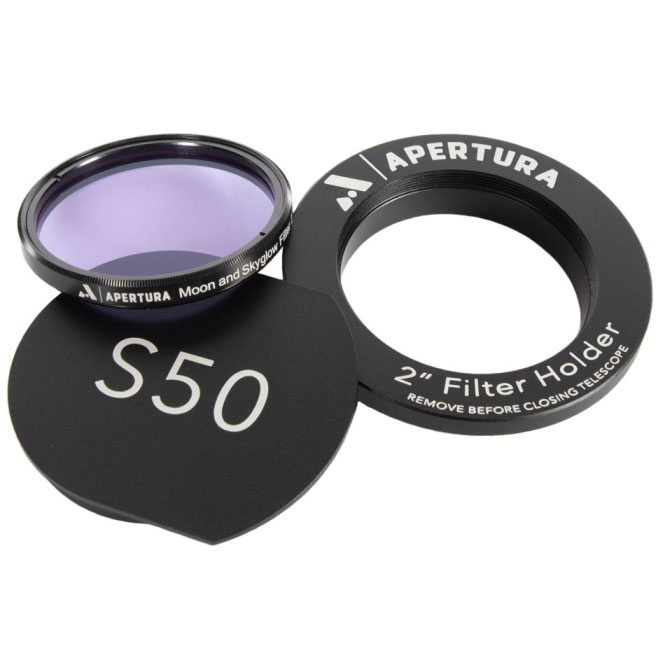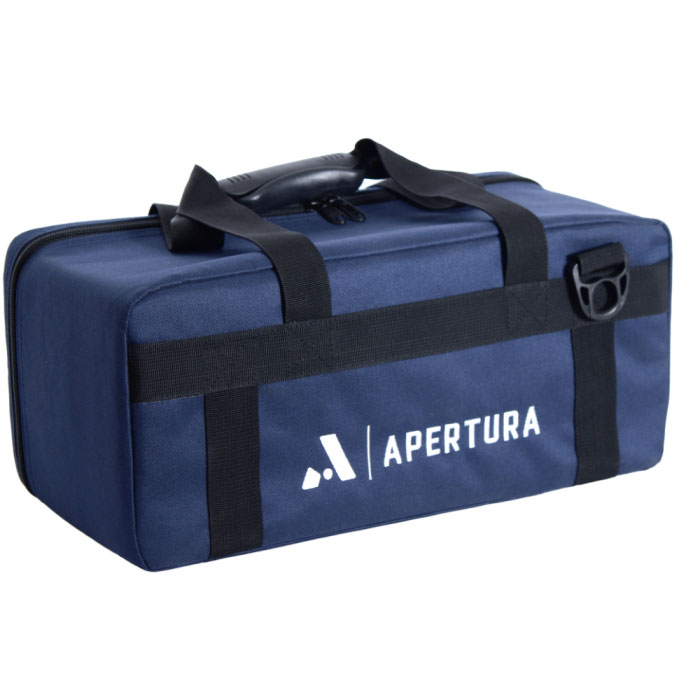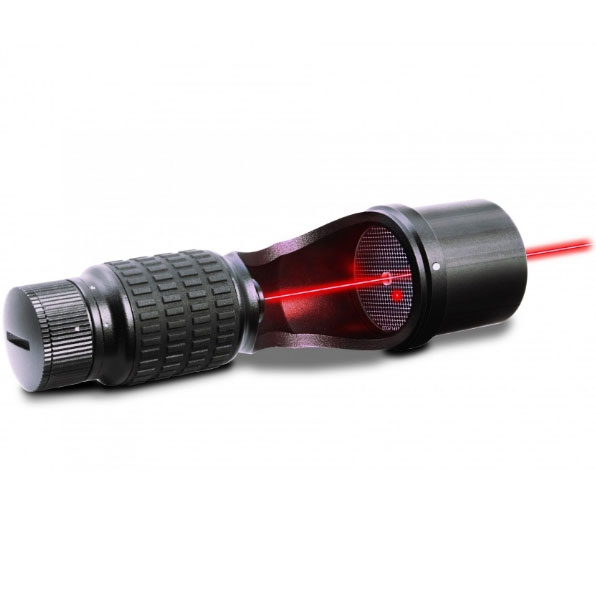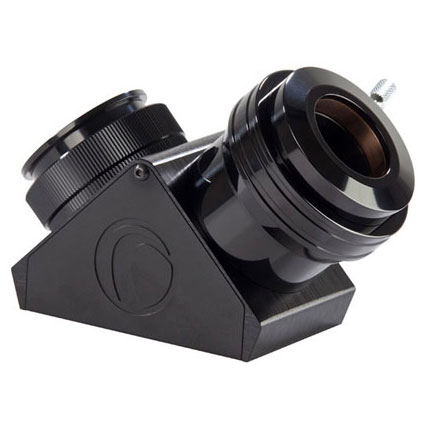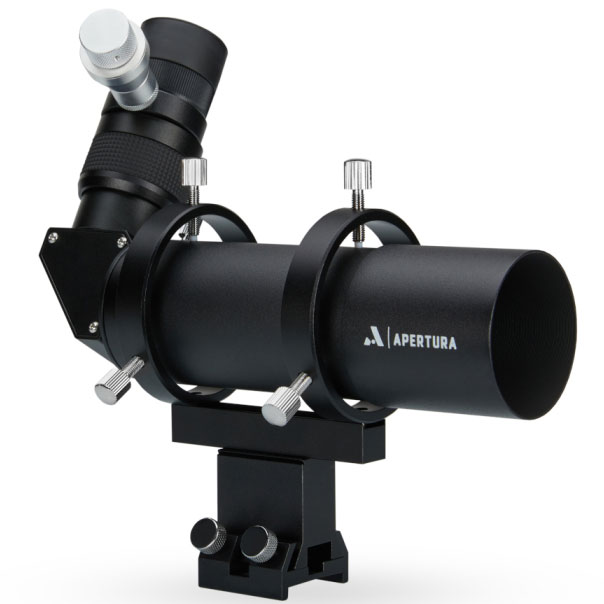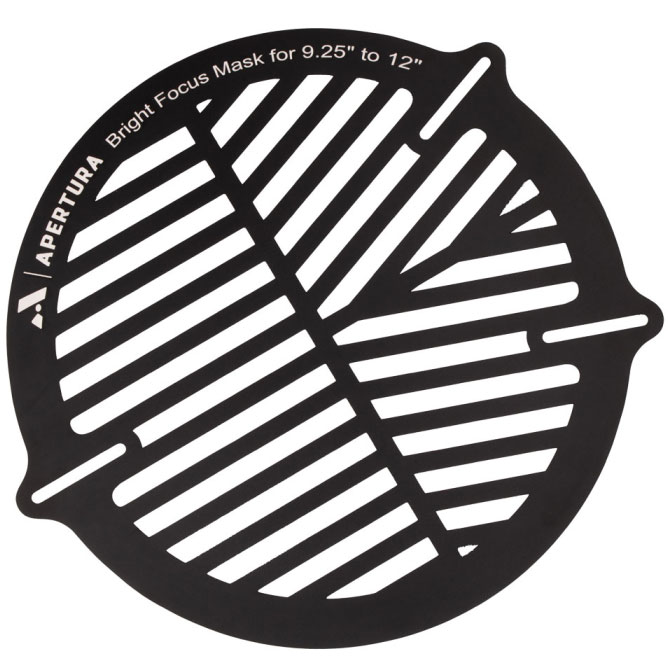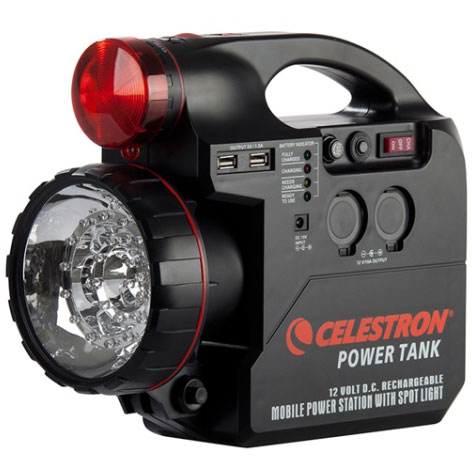Essential Telescope Accessories
Entering the ranks of amateur astronomy is an exciting and rewarding adventure, and for many of us, buying a telescope is the first step. Most new telescopes come with a few key accessories, such as a finder scope or an eyepiece or two, but while these accessories will allow you to start observing right "out of the box", they will not satisfy the majority of telescope owners for long.
Let High Point Scientific introduce you to the wide world of telescope accessories! From Apertura to ZWO, we have the eyepiece, Barlow lens, equatorial mount or astrophotography camera you are looking for! Below you will find a list of the most asked for telescope accessories with some links to the most popular product categories or brands our customers search for. Please keep in mind that our non-commissioned product advisors are available to help you choose the best telescope accessories for your telescope any time you would like some advice. Unlike big box stores, we want to help!
Eyepieces
To use a telescope, you will need at least one telescope eyepiece, since you can't look through the telescope without it. A telescope eyepiece also works in tandem with the focal length of the telescope itself to determine the magnification, or power, of the view. Want to explore the moon and planets in more detail or increase your field of view to see a deep-sky object in its entirety? Then it's time to go eyepiece shopping!
To determine what power a particular eyepiece will produce when used with your telescope, simply divide the focal length (mm) of the telescope by the focal length (mm) of the eyepiece. For example, a 12 mm eyepiece will produce 100X magnification in a telescope with a 1200 focal length (1200 mm divided by 12 mm = 100X).
Most amateur astronomers end up with anywhere from 3 to 5 eyepieces in order to cover a decent range of magnifications for the celestial objects they are interested in. When shopping for a telescope eyepiece, it is helpful to write down your telescope's focal length and the calculated magnification of any eyepiece you already have. This allows you to buy telescope eyepieces that produce magnifications you need instead of ending up with two eyepieces that give you close to the same magnification. For instance, most people want to shop for the best eyepiece for viewing the planets, and that means picking an eyepiece focal length that will give you close to maximum power for your telescope.
Check out our Telescope Eyepiece Guide to read more about figuring out maximum power for your telescope, what the scoop is regarding field of view and more about choosing the best eyepieces for your telescope.
Most Popular Eyepieces & Eyepiece Brands
Apertura Eyepieces - Economical, good quality Plossl and Super Wide eyepieces
Apertura Zoom Eyepiece - Zooms from 9-27 mm for a nice range of power in a single eyepiece.
Celestron Eyepieces - Wide range of eyepieces by the top telescope brand
Celestron Zoom Eyepiece - Zooms from 8-24 mm for a good magnification range in one eyepiece.
Celestron Eyepiece Kit - Super popular eyepiece kit with several eyepieces and filters in a nice case.
Televue Eyepieces - Top of the line telescope eyepieces from a renowned manufacturer
Televue Delos Eyepieces - Wide 72-degree field of view with comfortable 20 mm of eye relief
Barlow Lens
Do you want a lot of telescope magnification choices but aren't made of money? Let me introduce you to the benefits of a 2X Barlow; a single, fairly inexpensive piece of telescope equipment that will double the magnification of each and every eyepiece you own, assuming it has the proper barrel size. In other words, if you own three 1.25 inch eyepieces and an 1.25 inch Barlow, you'll have a total of six (6) magnification choices - three from the eyepiece itself and three when you are using an eyepiece in the Barlow!
To use a Barlow Lens, simply insert the eyepiece's chrome barrel into the Barlow's waiting receptacle and lock it down with the thumbscrew. Now insert the Barlow/Eyepiece combination into your focuser or telescope diagonal as usual.
Extra Perk when Using a Barlow: The ability to double the number of magnification choices you get from your eyepieces is more than reason enough to own a Barlow, but there's more! Plossl eyepieces are super popular and very economical, but very short focal length Plossl's - the ones that give you higher powers for the Moon and planets - can be difficult to look through due to their small exit pupil, or the size of the beam of light that exits the eyepiece.
Here is where the extra Barlow perk comes in: Say no to a frustratingly small exit pupil and buy a lower power eyepiece that is easier to view through, then use it with your Barlow to achieve the high power you desire!
Most Popular Barlow Lens
Apertura 2X ED Barlow Lens - 2" - Top selling 2" Barlow with ED glass and 1.25" insert - Use for both size eyepieces!
Apertura 2X Barlow Lens - 1.25" - Super popular and economical, yet good quality!
Televue 2X Barlow Lens - 1.25" - Great match for high quality Televue eyepieces.
Celestron 2X X-Cel LX Barlow Lens - 1.25" - A matching Barlow to the popular X-Cel eyepiece line. Great quality at a mid-range price.
Telescope Power Supplies & Adapters
If you have a computer or smartphone, we don't need to tell you about having the right power supplies around to charge or run your equipment. Computerized telescopes, just like any sophisticated electronic equipment, require a steady stream of power to find and track celestial objects and run the hand controller. Even telescopes with simple electronics, such as a Right Ascension motor, need power of some kind, so let's go over the basic choices an amateur astronomer has when it comes to powering their telescope.
Household Batteries: Many telescopes can be powered from standard household batteries, such as AA or AAA. If this is the case with your telescope, you will need to supply them yourself. We recommend that you always have at least one fresh change of batteries in your telescope accessory case! While it is pretty convenient to run your scope on household batteries, they can drain quickly, especially in cold weather. Most telescopes that use household batteries have the ability to be run on AC or DC current as well. We recommend you pick up an alternate form of power and use it most of the time. You can still keep some fresh batteries as back-up, or for times when they make the most sense, but using them as the primary source of power can get expensive and frustrating.
By the way, make sure you have an extra battery with you for each powered accessory you have. Some telescope finders, like this Apertura Multi-Reticle Red Dot Finder, normally use a flat round battery, like a CR-2032. The famous Telrad finder uses AA batteries. If you have an illuminator on your finder, like this Celestron 9x50 Right Angle Illuminated Finder Scope does, keep an extra battery on hand for that as well; trust us, batteries need replacing when you least expect it! You get the idea - check all of your equipment for anything that needs a battery and stock up!
Telescope AC Adapter: A telescope AC Adapter allows you to run your telescope from a standard wall outlet. It is important to buy an AC Adapter with the specifications your telescope requires, so pay attention to the volts required (usually 12VDC) and how much amperage the adapter delivers (2A, 3A, 5A, etc).
Before buying a telescope AC Adapter, think about where you will be using your telescope and how far away the nearest outlet is. It works great if you observe in your backyard and have an outlet nearby, but isn't much help when at star parties or out in the field. For help on choosing an AC adapter for your telescope or mount, feel free to talk to one of our product advisors.
Car Battery Adapter & DC Power Supply: For those times when powering your telescope via AC is out of the question, a simple 12V cigarette lighter adapter can do the trick. This cable plugs into your telescope at one end and a cigarette lighter socket on the other. You can find a cigarette lighter socket in your car or in a portable DC battery. It is less expensive, of course, to use your car battery to run your telescope, but you take the chance of draining the battery and getting stuck out in the middle of nowhere. I have seen it happen!
The safer alternative is to pick up a nice DC power supply for your telescope. Celestron offers the biggest selection of portable DC power supplies made with astronomers in mind. Also called a Celestron Power Tank, they are offered in both Sealed Lead Acid (SLA) and Lithium varieties and are available in several sizes and capacities. The Celestron PowerTank Lithium batteries are the most portable and can even be strapped to your telescope tripod leg to stay up and out of the way.
When choosing a power supply, think about how long your observing sessions tend to be. If you pull all-nighters, you will want something with a larger capacity. It is also important to think about any current or future telescope accessories that may need power. Do you want to run your dew heaters and keep your phone charged? Or maybe you have other uses for a DC power supply, like camping or as an emergency solution when the power goes out?
While there are several options for powering your telescope, we believe the best choice is a good DC power supply and car battery adapter cable. These items allow you to observe from anywhere, keep your tablet or phone charged, and provide emergency lighting to boot.
Most Popular Power Accessories
Apertura 5 amp AC Adapter - Run telescopes that need 2.5 amps or more from a standard wall outlet.
Celestron 12V 7AH Power Tank Power Station - Great solution for several hours of viewing and includes cable.
Celestron Power Tank Lithium Pro - Lots of power in a small package. Strap it to the tripod leg! Power cable included.
Telescope Filters
Most amateur astronomers have a few telescope filters in their accessories case. The right filter can help you lower the brightness of the moon, see more detail on the surface or cloud structure of the planets, block wavelengths of common light pollution offenders, or pass very specific emission lines along the spectrum. We will take a look at the most popular filters for beginning amateur astronomers below, but if you would like to do a deeper dive into the world of telescope filters, we recommend you read the High Point Filter Guide.
Moon Filter: One of the most popular telescope accessories of all time is the Moon Filter! That is because the Moon is so bright, especially when magnified through a telescope, that a filter is needed to make viewing comfortable and not allow the brightness to overwhelm your eye so it can better discern details. A telescope moon filter, or any other filter with threads, screws onto the end of most any eyepiece with the same size threads. For instance, if you have standard 1.25" eyepieces, buy a 1.25" moon filter.
A neutral density filter, or ND filter, is the most common type of moon filter. ND filters do not change the color of the light being transmitted (which is why they are called "neutral") and are available in different transmission levels, allowing you to choose how much you want to attenuate the brightness. You may come across other moon filters that have a color cast to them, such as green. A green tint helps with contrast, but if you prefer a natural look, buy a moon filter that is neutral.
Light Pollution Filter: Except for in a few special places, the world is full of artificial light pollution. Our cities are afflicted most of all, but even suburbs and rural areas have their share of shopping malls, car dealerships and porch lights. Amateur astronomers love to grab their telescope and head out to their local "dark sky site" in hopes of seeing the Milky Way and enjoying the undiluted night sky, but that is not always feasible, and unfortunately, millions of us live hours away from relatively dark skies. The best solution for observing in areas with sky glow is a light pollution filter. Like a moon filter, a light pollution filter threads onto the barrel of your eyepiece, or, if you have an SCT, you can buy a LPR filter (Light Pollution Reduction) that threads onto the rear cell of your telescope.
It is important to remember that a telescope light pollution filter cannot block ALL forms of light pollution. Most of them filter out the light given off by sodium and mercury lamps, but they cannot remove light from LED or incandescent bulbs. It is also important to know that any filter will dim your view. A telescope that gathers lots of light can handle a filter better than a small telescope, especially when looking objects that are faint already, like nebulae, galaxies and other deep sky objects. If you need help deciding whether to buy a light pollution filter for your telescope, feel free to contact one of our product advisors; we are here to help!
Popular Moon & Light Pollution Filters
Apertura Moon Filter - 18% transmission moon filter for 1.25" eyepiece. Green tint for increased contrast.
Celestron Moon Filter - 13% transmission 1.25" neutral density filter for no color change.
Celestron Light Pollution Filter - Ultra High Contrast 1.25" LPR filter for telescopes of at least 4" in aperture.
Telescope Dew Shield or Dew Heater
While dew can transform an early morning scene with its sparkling reflections, astronomers are not a fan. Sure, Newtonian reflector owners can rest easy knowing their optical tube is acting as one big dew shield, and even refractor owners normally have enough of a built-in dew shield to ward off moisture most of the time, but attention catadioptric telescope owners, you will be combating dew - it is just a matter of time.
If you have a Schmidt-Cassegrain telescope, a Maksutov-Cassegrain telescope, or any scope with an optical element positioned near the very front of the optical tube, plan on buying a dew shield, dew heater, or both! Even if you live in the desert, there will be times when moisture will start to collect on your corrector plate, and if left to its devices, dew will quickly bring your observing session to a halt. The trick is to prevent dew from forming on your optics in the first place. Here are a few options for dew prevention:
Telescope Dew Shield: A telescope dew shield fits over the front end of your telescope to create a wall around the front-facing optics. You can buy an aluminum dew shield, or hard dew shield, that will match the paint color of your OTA to create a very streamlined look. If you pick an aluminum dew shield, keep the box it came in for storage and transport to keep it dent-free. A popular (and cheaper) alternative to the painted matching dew shield is a flexible dew shield. Flexible dew shields are made of plastic and have velcro ends to transform it into a tube. The nice thing about flexible dew shields is they can lay flat when not in use. Either way, make sure to choose the correct diameter dew shield. Many are made specifically for a certain aperture and brand of telescope, while others may just list the diameter or diameter range. Knowing your OTA diameter is helpful before you start shopping.
Telescope Dew Heaters: There are two basic kinds of dew heaters for telescopes: Heated dew shields and heated dew heater strips. A heated dew shield looks very similar to a standard telescope dew shield except it has a protected, cushioned heating element on the inside edge of the shield. Dew heater strips are basically the protected, cushioned heating element by itself, without the dew shield. Either way, the idea is to keep the temperature of the air above the corrector plate just high enough that dew does not form. That function is most often handled by a dew controller; an electrical box that allows you to turn the temp up or down on each of the dew heaters you are using. A dew controller and other electrical accessories are best powered by a portable DC power supply.
Dew heaters can also be used for accessories as well, including finder scopes and eyepieces. Using heated dew prevention devices takes a little bit of finesse. If you keep the temperature too low, dew will form. If the temperature gets too high, you create unwanted heat currents over the front optics which may degrade your view. If you want to have a more automated system for dew control there are temperature sensors available that can be run on your computer. To learn more about dew prevention, check out the article Learn How to Combat Dew on Your Telescope.
Popular Dew Prevention Brands & Controllers
Astrozap - Huge selection of aluminum dew shields, flexible dew shields, heated dew shields and dew heaters.
Dew Controllers for Dew Heater Strips & Heated Dew Shields - Choose a simple one channel dew controller or a model that will handle several heaters at once.
Telescope Case
A telescope carrying case will protect your investment and help keep your telescope optics clean when in storage. A cushioned telescope case will also keep the need for optical collimation to a minimum, especially if you take your scope out to dark sky sites or travel to star parties and total solar eclipse locations.
Telescope cases can be as simple as a zipped fabric enclosure with a handle and strap. Some fabric cases accept the foam that the telescope shipped in for added protection. Hard cases are more expensive and bulky, but most come with custom foam, lockable latches and even telescoping handles and wheels. Keep in mind that you will need to purchase a tripod case separately in most instances. In fact, larger equatorial telescopes often need three or four cases; one each for the optical tube assembly, mount head, tripod, and counterweights!
A telescope cover is also a good investment, especially for those who want to keep their scope set up from one night to the next or who tend to set up early to let their telescope acclimate to the outside temperature. Some people even leave their telescope set up, cover it, and store it in their garage on Wheeley Bars. You can choose from a Telegizmos 365 telescope cover, which is a heavy-duty canvas type cover that is custom-cut for your telescope type and size, or you can pick a lighter weight Telegizmos telescope cover with a space blanket type coating. Which cover type you choose depends on the duration and type of exposure.
Cases for Telescope Components
Telescope Cases - Includes telescope OTA cases, small telescope cases, hard cases & soft cases.
Telescope Mount Cases - For telescopes that break down into mount, OTA and tripod components, these cases hold your equatorial mount head.
Tripod Cases - Cases for your telescope tripod. A variety of sizes is available.
Telescope Accessory Cases - Store all your eyepieces, filters & other small telescope accessories in a grab and go case. This section also includes small plastic cases for individual accessories.
Solar Filter
Use your telescope during the day to look at the Sun safely with a solar filter! With the addition of a solar filter sized to fit your telescope you can watch a solar eclipse or keep an eye on sunspots. Choose either a glass solar filter or a solar filter made with solar film. It is important to choose the right size sun filter for your telescope; you want it to fit snugly so that it stays put as you move your telescope around. Before you shop, measure the outside diameter of your telescope carefully and then find the solar filters available with the proper outside diameter range.
If you enjoy viewing the Sun you may want to think about buying a dedicated H-Alpha Solar Telescope! These solar telescopes come with an integrated h-alpha filter and a special blocking filter to make viewing safe for your eyes. H-alpha telescopes allow you to see features and details on the Sun that are invisible when using a standard white light solar filter.
SOLAR SAFETY: NEVER look at the Sun without the proper protection. Before you use your telescope to look at the Sun, read up on how to do so safely and invest in a safe solar filter. Never leave your telescope unattended or let others operate it for solar viewing unless you are sure they understand how to do so properly. This is not a full list of safety warnings for solar viewing, so take the time to educate yourself before you dive into this rewarding facet of amateur astronomy.
Popular Solar Filter & Solar Telescope Brands
Astrozap Baader Film Solar Filter - Baader AstroSolar film displays the Sun in neutral white. A high quality solar film!
Lunt Solar Systems - H-Alpha solar telescopes and solar filters made in the USA!
Astrophotography Cameras
If you want to do a little astrophotography through your telescope, you are not alone! Most amateur astronomers will try their hand at astro-imaging at some point, even if their camera of choice is their smartphone. Besides buying an inexpensive telescope smartphone adapter and putting your iPhone or Android to work, there are several options for taking photos of celestial objects.
Before we discuss the most popular camera types for astrophotography, it is important to remember that a motorized equatorial mount is required for exposures of more than a few minutes. If you have a telescope on an alt-azimuth mount, it doesn't mean you can't do astrophotography but that you will be limited to photographing brighter objects that do not require long exposures.
In any event, make sure the mount you do have is sturdy and will not move when you're taking a photo. For instance, Dobsonians are not usually a good choice for astrophotography because their design prevents them from being locked into place. There are always exceptions to the rules, and we have seen amazing results with some, shall we say, challenging equipment, but for the list below we are making the assumption that you have an equatorial mount that is capable of tracking objects and that it is sturdy enough to hold a camera steady. Here we go:
DSLR Camera: You may already have a digital SLR for terrestrial photography; if so, then why not use it for astrophotography? The most popular way to use a DSLR on a telescope is to remove the lens and attach it to a camera adapter with a brand-dedicated T-ring. The camera and adapter set up then connect to the telescope. Camera T-Rings are readily available for Nikon, Canon, and Sony brand cameras, but if you look around you can find a T-ring for Minolta, Pentax and Olympus as well. There are many accessories available for both Canon and Nikon cameras. You can even add a clip-in narrowband filter for imaging at a particular wavelength. DSLR imaging is popular and so there are lots of videos and articles available to help you get started, and since you have already invested in the camera, you might as well give it a go!
Planetary Camera: A planetary camera is a wonderful introduction to the world of astro-imaging. This little telescope camera only weighs a few ounces and is very small - we have plenty of eyepieces for sale that are way bigger! To image a planet, let's say Jupiter, this CMOS camera captures a huge number of single frames in a few minutes. It then takes the best of these frames and stacks them together to form a single image. Software comes with the camera that allows you to perform functions that can improve the final image. For more information on planetary imaging, check out Capturing the Planets with a Telescope & Simple CMOS Camera and Choosing the Best Planetary Camera.
Deep Sky Camera: This premium telescope camera has a bigger sensor to capture the faint light of distant galaxies, nebulae and other celestial objects that reside outside of our solar system. These imaging cameras have lots of other features beyond a simple sensor and shutter, including internal cooling, filter wheels & more. Choosing the right deep space astronomy camera is not easy, but luckily our non-commissioned product advisors can help! They will want to know the make, model and aperture of your telescope in order to match the right camera to your system. In the meantime, take a look at the huge selection of astronomy cameras we offer and note the large range of prices. If you think about how important astrophotography is to you, it will help you decide on a budget. Some amateur astronomers image 90% of the time, others only take an occasional snapshot and most avid telescope users fall somewhere in between. It's okay if you have no idea how much you want to spend doing astrophotography, by the way. In that case we would recommend starting with a planetary camera and moving up to a larger, fancier camera when you're ready. Check out this superb guide to Choosing the Best Deep Sky Camera.
Most Recommended Planetary & Deep Sky Cameras
ZWO ASI462MC - Planetary - Small pixel size for short to medium focal length telescopes.
ZWO ASI224 - Planetary - Medium pixel size, uptick in sensitivity makes this camera a good choice for EAA (Electronically Assisted Astronomy) as well as planetary imaging.
QHY5III174 - Planetary - Large pixel size, great for longer focal length scopes or when used with high mag Barlows.
ZWO ASI183 or QHY183 - Deep Sky - Small pixel size, great for short to medium focal length telescopes.
ZWO ASI1600 or QHY163 - Deep Sky - Medium pixel size, great for lots of different telescopes.
QHY600 or ZWO ASI6200 - Deep Sky - Medium pixel size, full frame camera for larger field of view.
ZWO ASI294 or QHY294 - Deep Sky - Large pixel size, great for telescopes with long focal lengths.
Equatorial Mount
If you read the above information about the requirements for deep space astrophotography, you'll understand why we have listed an equatorial telescope mount as a separate accessory. It is true that most people buy a telescope package that includes a mount and tripod, but many people who start out with a telescope on an alt-azimuth mount or a beginner's equatorially mounted telescope decide to upgrade to a computerized equatorial mount at some point in order to do serious astrophotography.
Whatever the reason, if you are in the market for an equatorial mount, it is important that you pay attention to the load capacity the mount can comfortably handle and make sure your optical tube, camera, and any other accessories you plan to ride on it do not exceed maximum capacity
If you will be doing astrophotography with the mount, choose a weight capacity that is twice the weight of your OTA, camera, flattener, guide scope, or any other accessories you plan to use on it. For instance, if your OTA weighs 20 pounds and all other accessories weigh 5 pounds, then shoot for a mount with a weight capacity of at least 50 pounds. This extra wiggle room will allow your mount to track and guide at its best.
For those who only plan to do visual work with their equatorial mount, give yourself at least 5 pounds of extra weight capacity in order to accommodate any new accessories you may acquire in the future. Visual use does not require the same level of tracking accuracy that astrophotography does, so as long as you have a well-balance load, your telescope mount should perform as the manufacturer states as long as you do not go over the published weight capacity.
Read our Telescope Mount Buying Guide for a lot more information on choosing the right mount for you. It will talk about alt-azimuth mounts as well, but most of the article discusses equatorial mount considerations and offers some options for mounts with different weight capacities and features.
Most Popular Equatorial Mounts with 5-Star Rating
Celestron AVX Advanced VX Equatorial Mount - The Celestron AVX is a super popular mid-weight computerized mount with 30 pound weight capacity
Skywatcher EQ6-R Pro Equatorial Mount - The EQ6R Pro has a 44 pound capacity, built-in illuminated polar alignment scope and super stable.
Celestron CGX Equatorial Mount - The Celestron CGX is great for larger loads (up to 55 pounds) and comes with spring-loaded gears, all-star polar alignment. Supports remote operations, plate solving and lots of other high tech mount capabilities.

